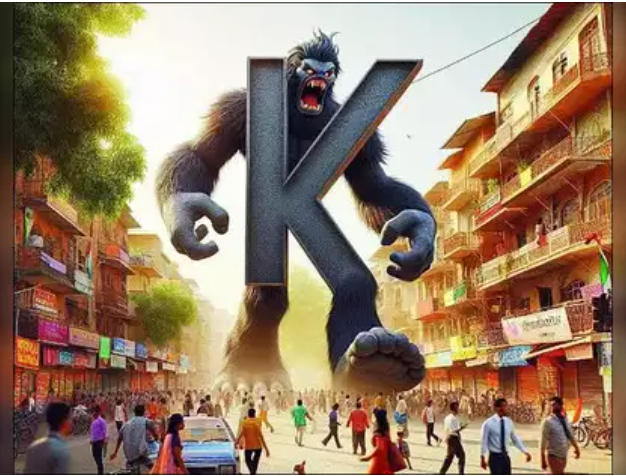RBI projects economic growth at 7.3% for 2023-24, surpassing earlier estimates. The current year’s recovery is significant, especially considering the decline in agricultural production due to poor rains caused by El Nino. Manufacturing and services sectors have thrived, compensating for the agricultural shortfall. The growth has been criticized for benefiting only the rich, but indicators such as rising car sales and FMCGs suggest a positive trend for the middle class and rural poor.
Our economy is experiencing an unexpected boom. RBI has just projected economic growth in 2023-24 at 7.3%, against 6.5% estimated earlier. This comes on top of 7.2% achieved the previous year. Last year’s surge could be dismissed as a mere recovery from two terrible Covid years, what cynics would call a dead-cat bounce. But the current year’s recovery cannot be so dismissed.
Besides, it has taken place in a year when agricultural production has fallen because of poor rains caused by El Nino. Manufacturing and services have boomed, more than making up for the agricultural shortfall. Optimists will soon start saying that India is once again becoming a miracle economy, defined as averaging 7% growth for a decade.
Many analysts complain that faster growth has benefited only the rich and not the poor, in what is graphically called a ‘K-shaped’ recovery from Covid. We do not have enough data on consumption, to be sure. But many critics cite the stagnation in two-wheeler sales even as auto sales have picked up.
I am astonished at this line of thought. The bulk of cars are bought by the middle-classes, not by the very rich. Yes, premium car sales are up. But overall car sales indicate a rising middle class too. The alleged K-shaped recovery suggests no change at all for the middle classes, and that is plain wrong.
On the other hand, two-wheelers are not bought by the poor, who lack the funds, but by the lower-middle class and rural well-off. The poor walk, or use bicycles. However, bicycle sales are not a good indicator of rural workers’ demand, because so many states give free cycles to schoolchildren, and booming rural bus services have reduced the need for cycles.
A far better indicator is the sale of FMCGs covering everything from biscuits and cosmetics to detergents and tea. FMCG sales have risen significantly in the last two years. For this to happen despite the adverse impact of El Nino on farm production is a positive sign for the rural poor. FMCG buoyancy contradicts the notion of a K-shaped recovery.
Two Covid years and one El Nino year make it difficult to capture the underlying trend. But rural employment has shot up, suggesting that the poor are participating in the post-Covid recovery.
India has long had one of the lowest rates of female participation in the workforce, lower even than in Saudi Arabia. But recent data show a sharp rise in workforce participation of both men and women. In rural areas, between 2017-18 and 2022-23, the male participation rate rose from 72% to 76%. The female rate shot up from 23.7% to 40.7%, an astonishing improvement. Rural unemployment (by the usual status definition) is down for men (from 5.7% to 2.7%) and women (from 3.8% to 1.8%).
So, even if real wages are stagnant, greater participation suggests that total rural wage earnings rose by almost a quarter in five years. The rural poor are also benefiting from remittances sent by family members working in urban areas. Free food grains of 5 kg per family member would have released purchasing power for FMCG purchases. This would have buttressed cash grants for farmers through PM Kisan, Rythu Bandhu (in Telangana) and KALIA (in Odisha).
The earlier fall in female workforce participation in 2001-11 was interpreted by some analysts as lack of work due to mechanisation. But mechanisation has continued. Yet, female participation has now shot up.
So, we have a puzzle. Why did female participation first plunge and then shoot up again? Further research is needed to find out why. What is incontrovertible is that rural wage earnings must have risen significantly because of more days worked, even if the real wage was stagnant.
This contradicts the thesis of a K-shaped recovery. Doubtless, the rich have benefited from a soaring stock market after the Covid crash. Sales of pricey flats and premium cars are booming. But these constitute a tiny slice of the economy, far smaller than FMCG sales.
The economic surge this year has come despite difficult global conditions described by economist Larry Summers as ‘the world is on fire’. He cited adverse conditions like high interest rates, high inflation (which is, however, falling now), neo-protectionism and wars.
India’s neighbours – Pakistan, Sri Lanka and Bangladesh – have all been obliged to go to IMF for emergency loans. They have been burned by the global fire. But India looks fireproof. It is so rock-solid stable that few Indians are even aware of a global crisis.
The economy still has many flaws. School-learning outcomes are abysmal. We have been overtaken in health indicators by even Nepal. And 6 of the 10 most polluted cities in the world are in India.
But the problems do not include a K-shaped recovery. The India Brand Equity Foundation estimates that FMCG sales will grow at a compound rate of 14.5% a year, doubling from $110 billion in 2020 to $220 billion in 2025. If this happens, it will be a remarkable performance in five years marked by two years of Covid and at least one of El Nino.


